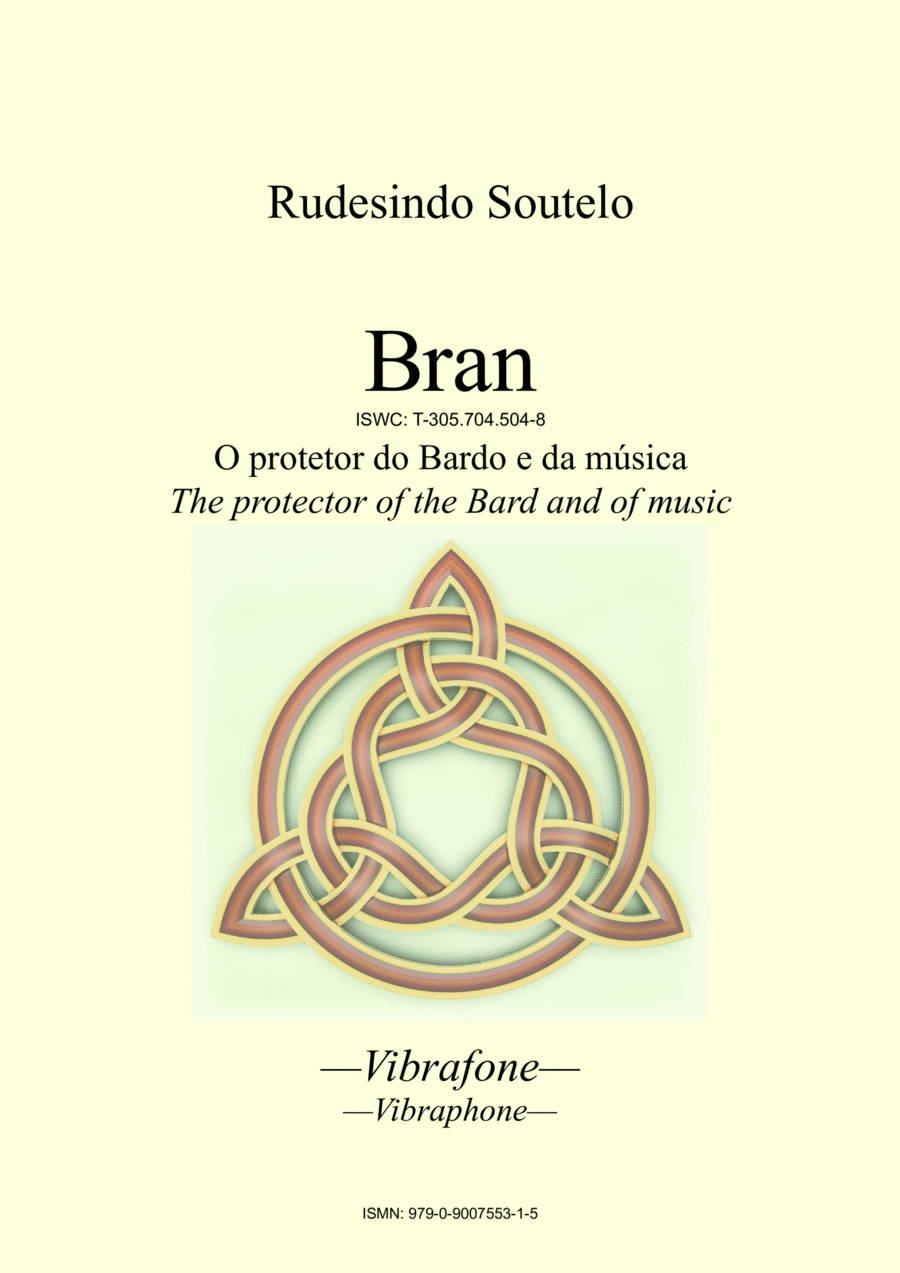Vibraphone Solo - Level 3 - Digital Download SKU: A0.1013243 Composed by Rudesindo Soutelo. Celtic,Contemporary,Irish,Multicultural,Standards,World. Individual part. 8 pages. Publisher by Rudesindo Soutelo #6477789. Published by Publisher by Rudesindo Soutelo (A0.1013243). To Mizuki AitaRudesindo SouteloBran - O protetor do Bardo e da música / The protector of the Bard, and of music (2021) for Vibraphone [ca. 4' 16].--
